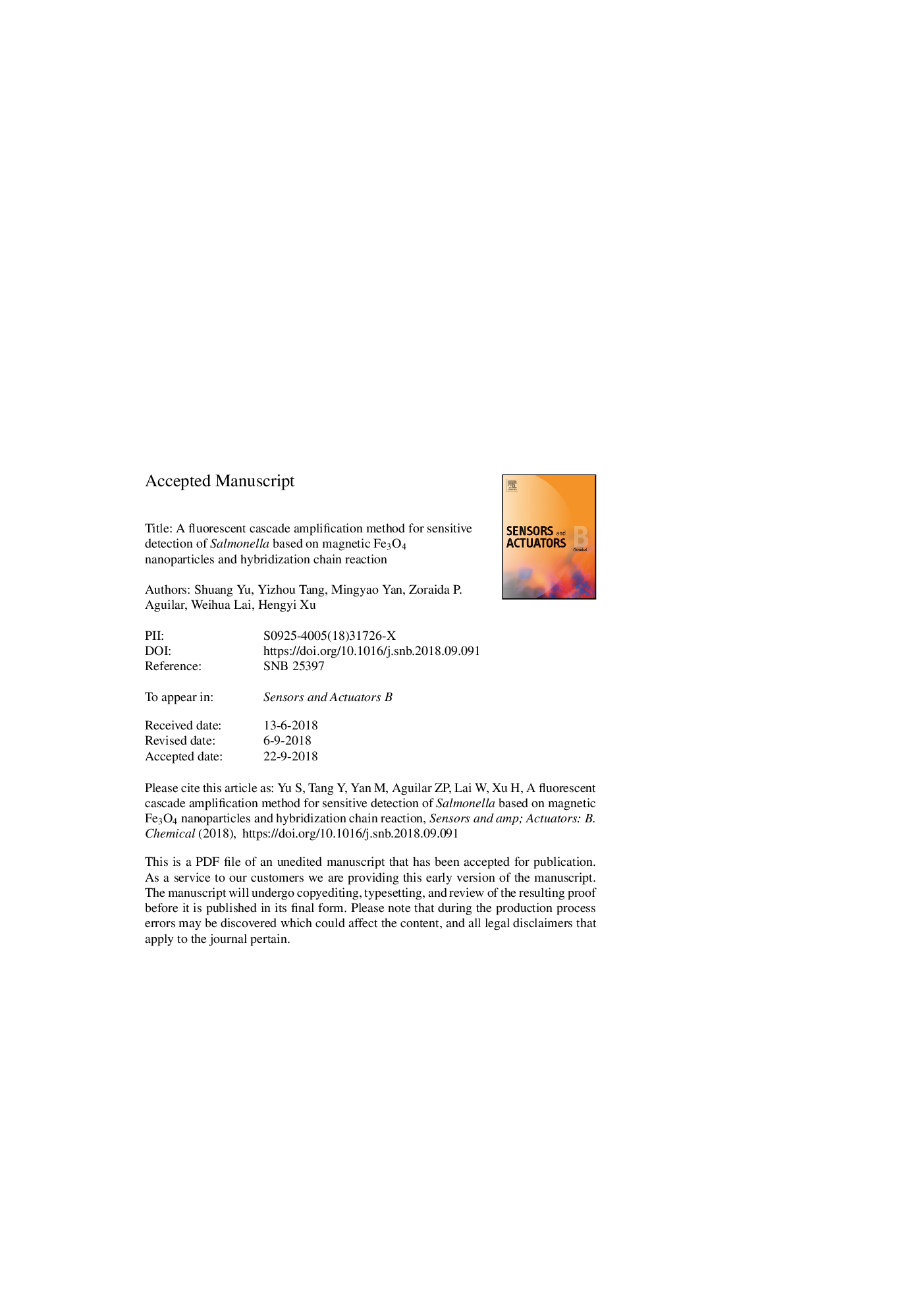| Article ID | Journal | Published Year | Pages | File Type |
|---|---|---|---|---|
| 11016341 | Sensors and Actuators B: Chemical | 2019 | 35 Pages |
Abstract
We developed a fluorescence sensor based on hybridization chain reaction (HCR) and Fe3O4 nanoparticles for the detection of Salmonella, common pathogen related to numerous food poisoning outbreaks. In this study, a pair of specific primers based on invA of Salmonella was designed and used in asymmetric polymerase chain reaction (aPCR) to produce a long target single-stranded DNA (ssDNA) that was captured by biotin-probe labeled magnetic beads (MBs) forming the MBs-ssDNA. The target ssDNA triggered HCR amplification with the two carboxyfluorescein (FAM) labeled DNA hairpin reporter probes (H1-FAM, H2-FAM) that enabled the measurements of the fluorescence intensities from the resulting ssDNAâ¼(H1-FAM â¼H2-FAM)n. The Fe3O4 nanoparticles were used to isolate the target ssDNA which hybridized with the reporter probes and led to decreased background signal that resulted in a detection limit of 7.4âÃâ101âCFU/mL in buffer and 6.9âÃâ102âCFU/g in spiked lettuce. The method developed also showed excellent selectivity over several common foodborne pathogens. The Fe3O4 nanoparticles capture coupled with fluorescence detection sensor showed promise for the detection of Salmonella.
Related Topics
Physical Sciences and Engineering
Chemistry
Analytical Chemistry
Authors
Shuang Yu, Yizhou Tang, Mingyao Yan, Zoraida P. Aguilar, Weihua Lai, Hengyi Xu,
